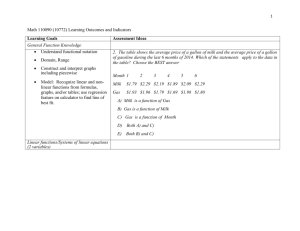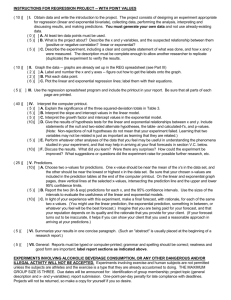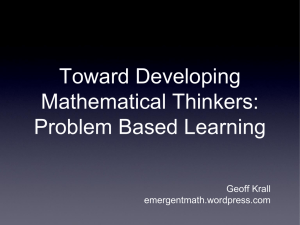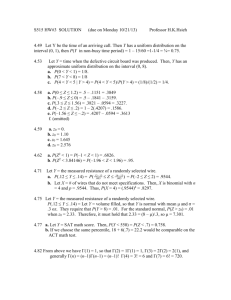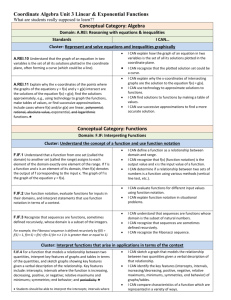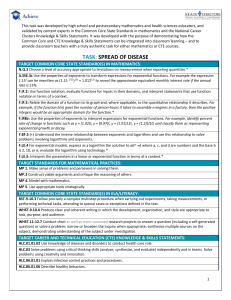Common Core Algebra Unit 3
advertisement
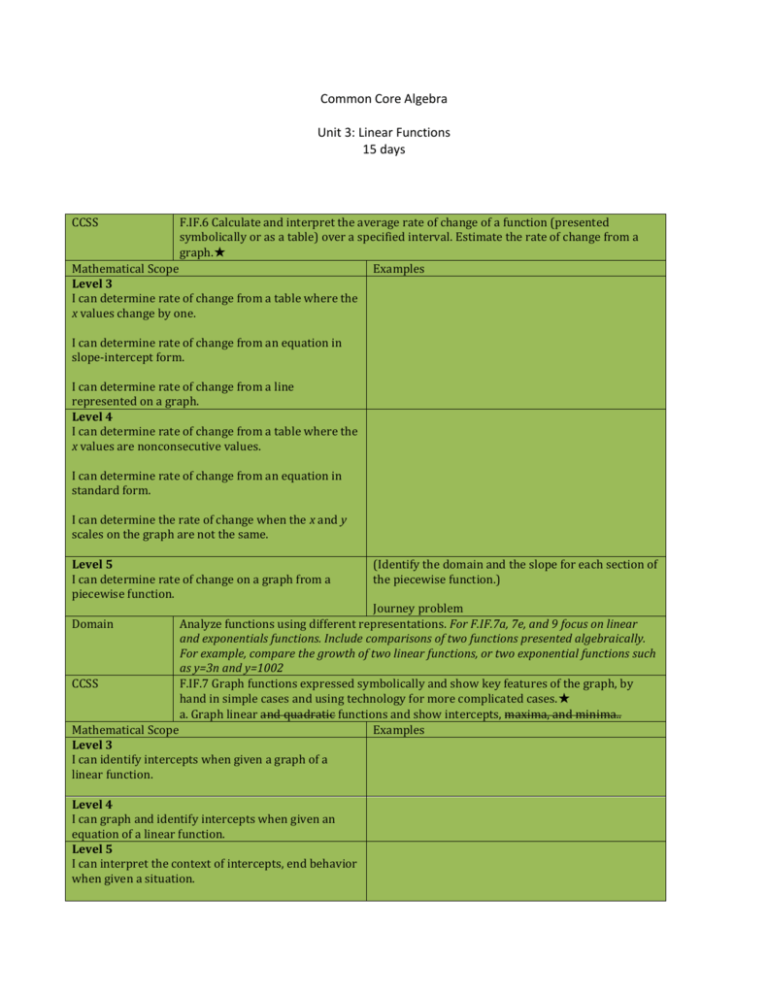
Common Core Algebra Unit 3: Linear Functions 15 days CCSS F.IF.6 Calculate and interpret the average rate of change of a function (presented symbolically or as a table) over a specified interval. Estimate the rate of change from a graph.★ Mathematical Scope Examples Level 3 I can determine rate of change from a table where the x values change by one. I can determine rate of change from an equation in slope-intercept form. I can determine rate of change from a line represented on a graph. Level 4 I can determine rate of change from a table where the x values are nonconsecutive values. I can determine rate of change from an equation in standard form. I can determine the rate of change when the x and y scales on the graph are not the same. Level 5 I can determine rate of change on a graph from a piecewise function. (Identify the domain and the slope for each section of the piecewise function.) Journey problem Analyze functions using different representations. For F.IF.7a, 7e, and 9 focus on linear and exponentials functions. Include comparisons of two functions presented algebraically. For example, compare the growth of two linear functions, or two exponential functions such as y=3n and y=1002 CCSS F.IF.7 Graph functions expressed symbolically and show key features of the graph, by hand in simple cases and using technology for more complicated cases.★ a. Graph linear and quadratic functions and show intercepts, maxima, and minima.. Mathematical Scope Examples Level 3 I can identify intercepts when given a graph of a linear function. Domain Level 4 I can graph and identify intercepts when given an equation of a linear function. Level 5 I can interpret the context of intercepts, end behavior when given a situation. Domain • Build new functions from existing functions. Focus on vertical translations of graphs of linear and exponential functions. Relate the vertical translation of a linear function to its yintercept. While applying other transformations to a linear graph is appropriate at this level, it may be difficult for students to identify or distinguish between the effects of the other transformations included in this standard. CCSS F.BF.3 Identify the effect on the graph of replacing f(x) by f(x) + k, k f(x), f(kx), and f(x + k) for specific values of k (both positive and negative); find the value of k given the graphs. Experiment with cases and illustrate an explanation of the effects on the graph using technology. Include recognizing even and odd functions from their graphs and algebraic expressions for them. Mathematical Scope Examples Level 3 I can describe the transformations of a function when given a graph. Level 4 I can describe the transformations when given the equation of a function. Level 5 I can write a function given a scenario describing the function’s transformations. I can describe two different series of transformations given the graphs of two functions. Domain CCSS Construct and compare linear, quadratic, and exponential models and solve problems. For F.LE.3, limit to comparisons between linear and exponential models. In constructing linear functions in F.LE.2, draw on and consolidate previous work in Grade 8 on finding equations for lines and linear functions (8.EE.6, 8.F.4). F.LE.1 Distinguish between situations that can be modeled with linear functions and with exponential functions. a. Prove that linear functions grow by equal differences over equal intervals; and that exponential functions grow by equal factors over equal intervals. b. Recognize situations in which one quantity changes at a constant rate per unit interval relative to another. Mathematical Scope Level 3 Level 4 I can determine if a function is linear or non-linear given the table of values, graph, or situation. I can determine if a situation can be modeled with a linear function. Examples Level 5 CCSS F.LE.2 Construct linear and exponential functions, including arithmetic and geometric sequences, given a graph, a description of a relationship, or two input-output pairs (include reading these from a table). Mathematical Scope Examples Level 3 Level 4 I can write a linear equation when given a graph, table of values, or situation. See Unit 1. Level 5 Domain Interpret expressions for functions in terms of the situation they model. Limit exponential functions to those of the form f(x) = abx. CCSS F.LE.5 Interpret the parameters in a linear or exponential function in terms of a context. Mathematical Scope Examples Level 3 I can interpret the real life meaning of the slope and y-intercept. Level 4 I can write a linear equation to model a real world situation. Level 5 I can match a given situation with the appropriate graph. I can write a real world situation to model given data or a graph. Domain Interpret linear models. Build on students’ work with linear relationships in eighth grade and introduce the correlation coefficient. The focus here is on the computation and interpretation of the correlation coefficient as a measure of how well the data fit the relationship. The important distinction between a statistical relationship and a cause andeffect relationship arises in S.ID.9. CCSS S.ID.7 Interpret the slope (rate of change) and the intercept (constant term) of a linear model in the context of the data. Mathematical Scope Examples Level 3 I can interpret the rate of change and the starting point from a graph or a written model. Level 4 I can compare and contrast two models given their graph and data. Level 5 I can alter the rate of change or starting point by adding additional data.


